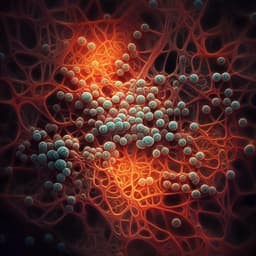
Medicine and Health
Plasma proteomics identify biomarkers predicting Parkinson's disease up to 7 years before symptom onset
J. Hällqvist, M. Bartl, et al.
Discover how a groundbreaking blood test can identify individuals at risk for Parkinson's disease years before symptoms appear! This innovative research by Jenny Hällqvist and colleagues highlights the potential of a targeted mass spectrometry assay in predicting disease onset, offering hope for earlier interventions and clinical trials.
Playback language: English
Related Publications
Explore these studies to deepen your understanding of the subject.







